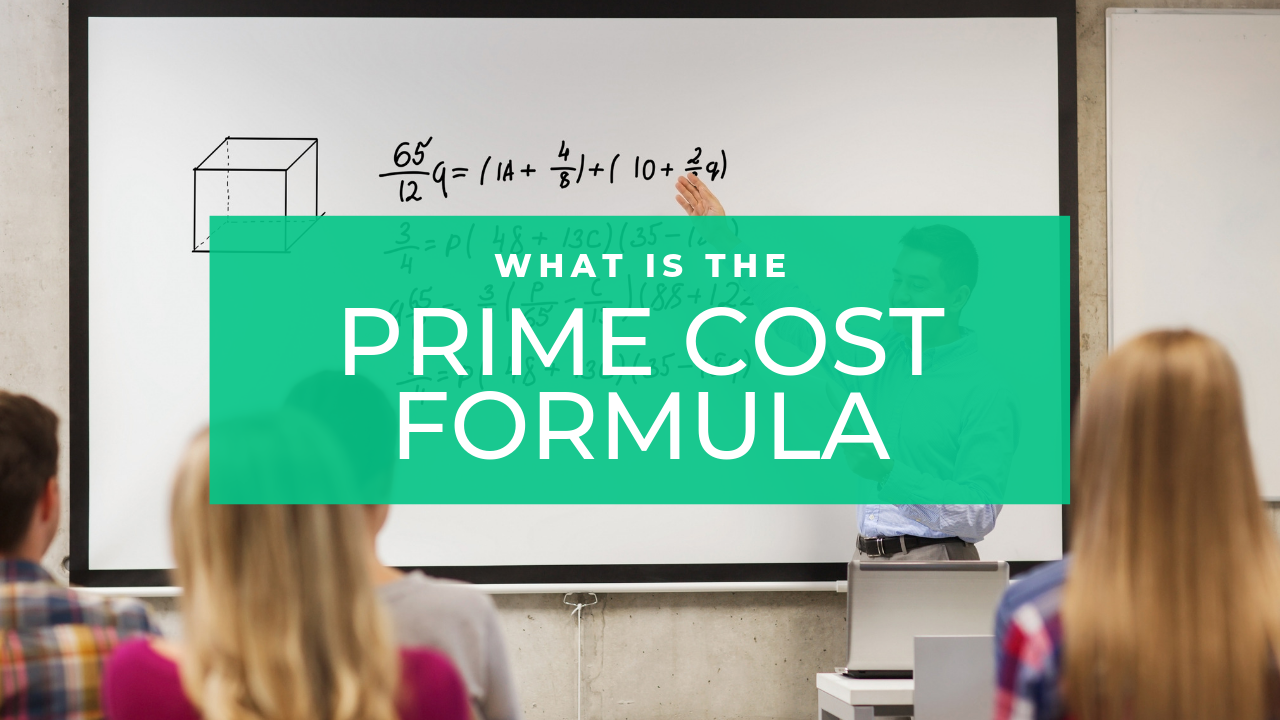What Is the Prime Cost Formula

Have you heard about prime cost and wondered what the definition of prime cost was? Restaurant prime cost is the one number you need to know and manage to make any money in the restaurant business. Watch this video (or keep reading) to learn the prime cost formula and where to find the numbers in your restaurant.
For decades, restaurants have been run with one key number in mind. This magic number ensures that the owners make money. It’s called prime cost. To old timers like me, it used to be called controllable expenses, in the control of management on a daily basis on how they hire, fire, schedule their team members to purchasing and utilizing products.
What Is the Restaurant Prime Cost Formula?
Prime Cost = Total Cost of Goods Sold + Total Labor Cost
My goal is to teach anyone who is responsible for the success of a restaurant what you need to know to get your prime cost at or below 55 percent!
That's right - your total COGS and labor cost combined will be no more than 55 percent if you follow what I teach you.
This is the number you use to measure the work your managers are doing. It's their report card because it's the numbers that are within their control.
The prime cost formula is the grand total of your total cost of goods sold, which includes both food cost and liquor (also known as pour cost), and total labor cost. (In order to have an accurate prime cost number you must be on an accrual accounting system.) It’s a key number in running a profitable restaurant.
Cost of goods sold (COGS)
To calculate your actual cost of goods sold accurately, you start with your beginning inventory, add to it your total purchase for that period (in this example, let’s say one month), then subtract your ending inventory. The sum of this calculation will give you your total cost of goods sold (the total of all product you physically used or left your shelves during that month).
Labor cost calculation
Total labor cost includes not only the total wages your employees have earned for that period (again for this example we will use a month), and this is where most restaurants stop, but is also includes total taxes, benefits and any insurances paid (workers’ compensation and health insurance).
If you’re able to consistently achieve a 55 percent prime cost, you’re looking at a solid 15-20 percent profit margin.
Don't miss my free online course that teaches you the prime cost formula and then step by step how to find and then lower your restaurant's prime cost.
If you would like to learn more about the importance of systems and how to run a restaurant, read our free special report, Is Your Food Distributor Screwing You? 5 Things You Can Do Now to Lower Food Cost. Download it here. Be sure to visit my YouTube channel for more helpful restaurant management video tips.




